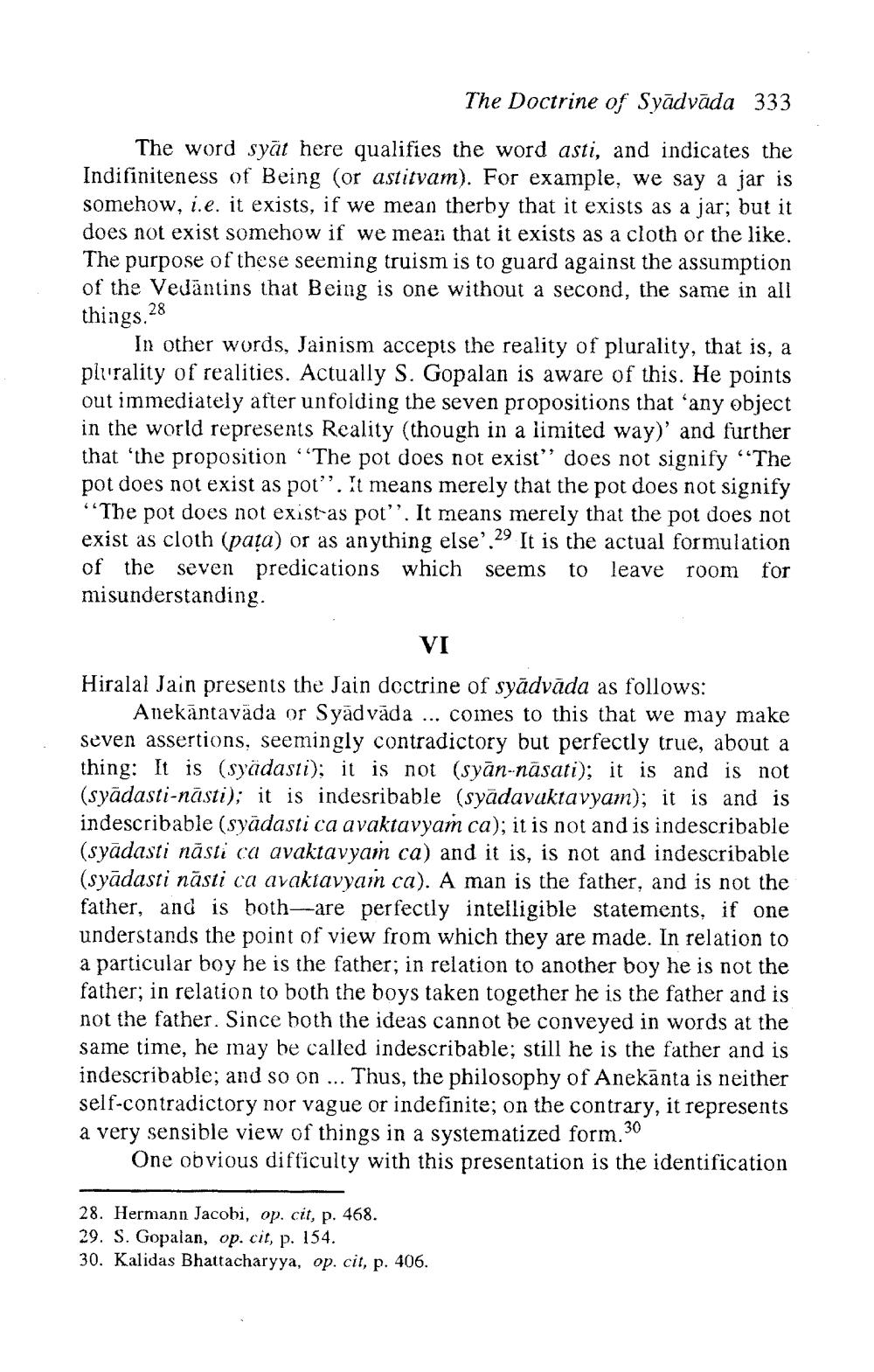________________
The Doctrine of Syādvāda 333
The word syāt here qualifies the word asti, and indicates the Indifiniteness of Being (or astityam). For example, we say somehow, i.e. it exists, if we mean therby that it exists as a jar; but it does not exist somehow if we mean that it exists as a cloth or the like. The purpose of these seeming truism is to guard against the assumption of the Vedāntins that Being is one without a second, the same in all things.28
In other words, Jainism accepts the reality of plurality, that is, a plurality of realities. Actually S. Gopalan is aware of this. He points out immediately after unfolding the seven propositions that ‘any object in the world represents Reality (though in a limited way)' and further that 'the proposition “The pot does not exist' does not signify “The pot does not exist as pot”. It means merely that the pot does not signify “The pot does not exist-as pot”. It means merely that the pot does not exist as cloth (pața) or as anything else'.29 It is the actual formulation of the seven predications which seems to leave room for misunderstanding.
VI
Hiralal Jain presents the Jain doctrine of syādvāda as follows:
Anekantavada or Syädvāda ... comes to this that we may make seven assertions, seemingly contradictory but perfectly true, about a thing: It is (syädasti); it is not (syān-näsati); it is and is not (syādasti-năsti); it is indesribable (syādavukta vyam); it is and is indescribable (syädasti ca avaktavyam ca); it is not and is indescribable (syādasti nästi ca avaktavyai ca) and it is, is not and indescribable (syādasti năsti ca avaktavyain ca). A man is the father, and is not the father, and is both are perfectly intelligible statements, if one understands the point of view from which they are made. In relation to a particular boy he is the father; in relation to another boy he is not the father; in relation to both the boys taken together he is the father and is not the father. Since both the ideas cannot be conveyed in words at the same time, he may be called indescribable; still he is the father and is indescribable; and so on ... Thus, the philosophy of Anekānta is neither self-contradictory nor vague or indefinite; on the contrary, it represents a very sensible view of things in a systematized form.30
One obvious difficulty with this presentation is the identification
28. Hermann Jacobi, op. cit, p. 468. 29. S. Gopalan, op. cit, p. 154. 30. Kalidas Bhattacharyya, op. cit, p. 406.




